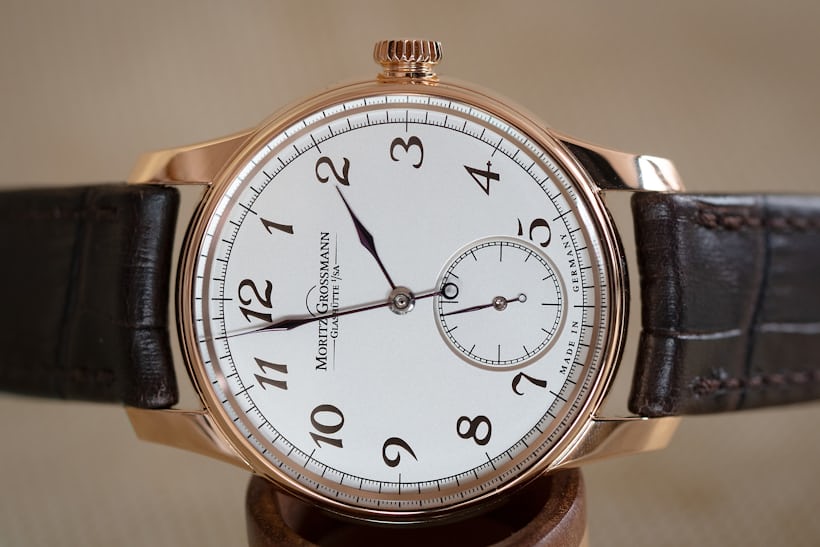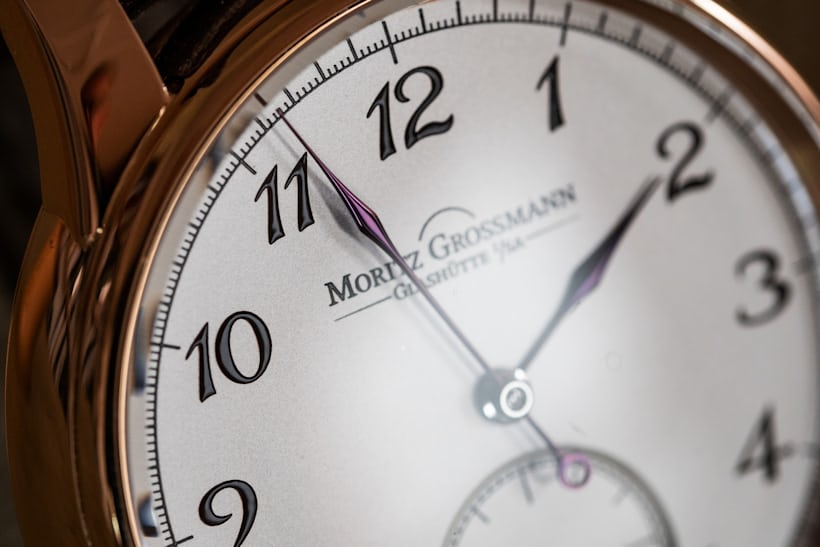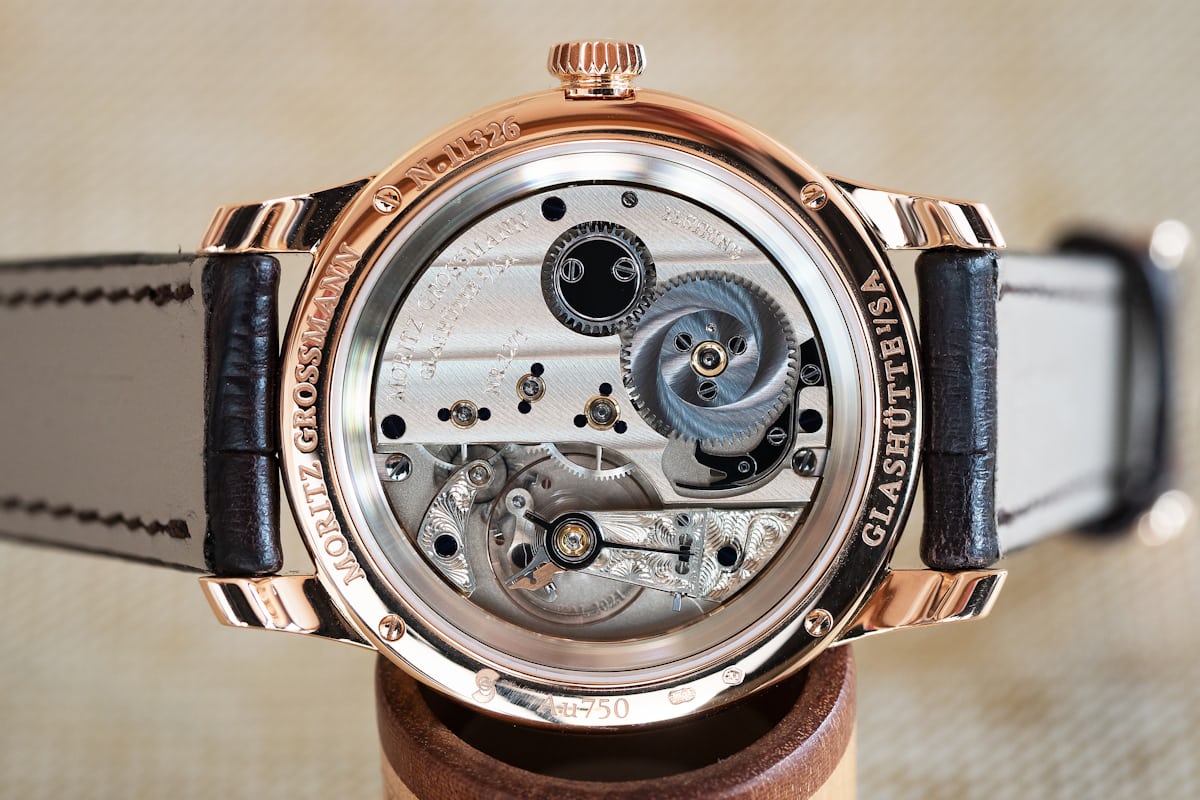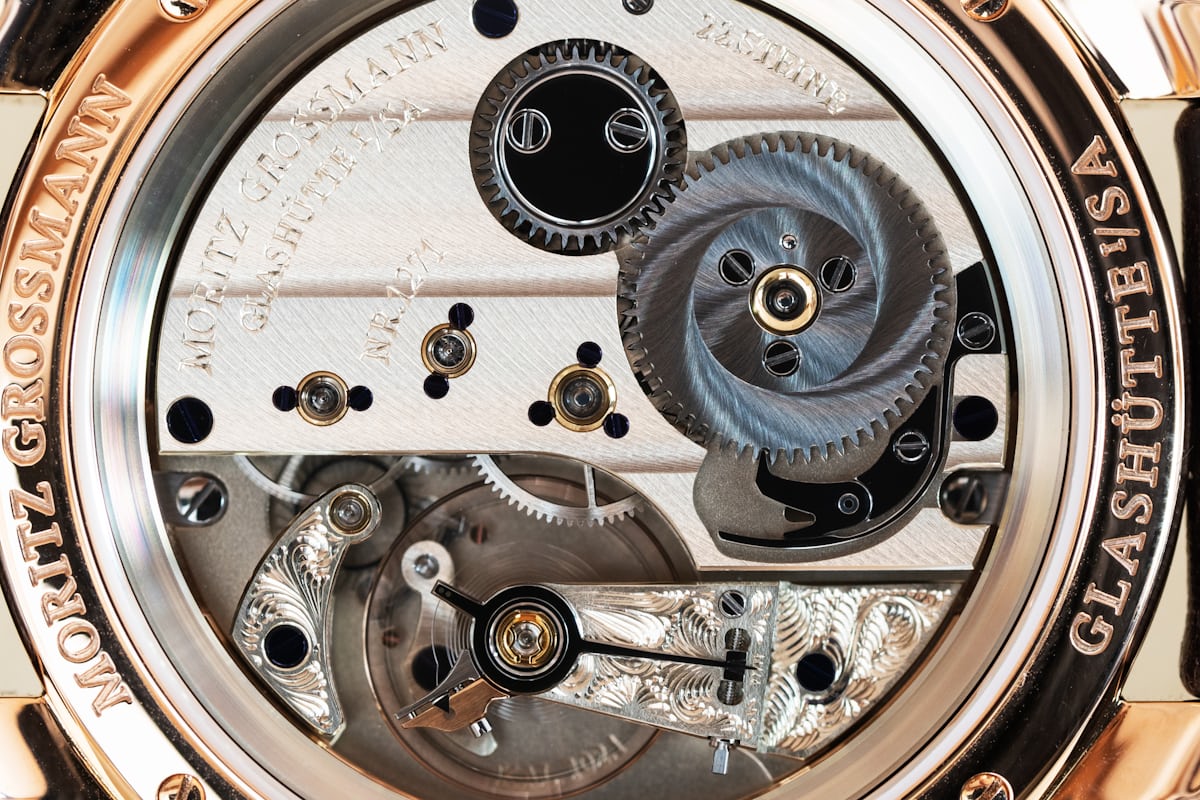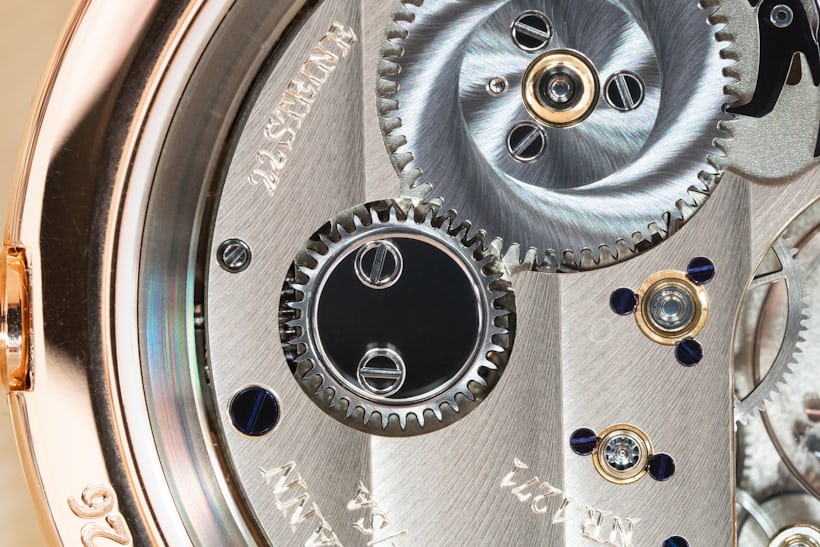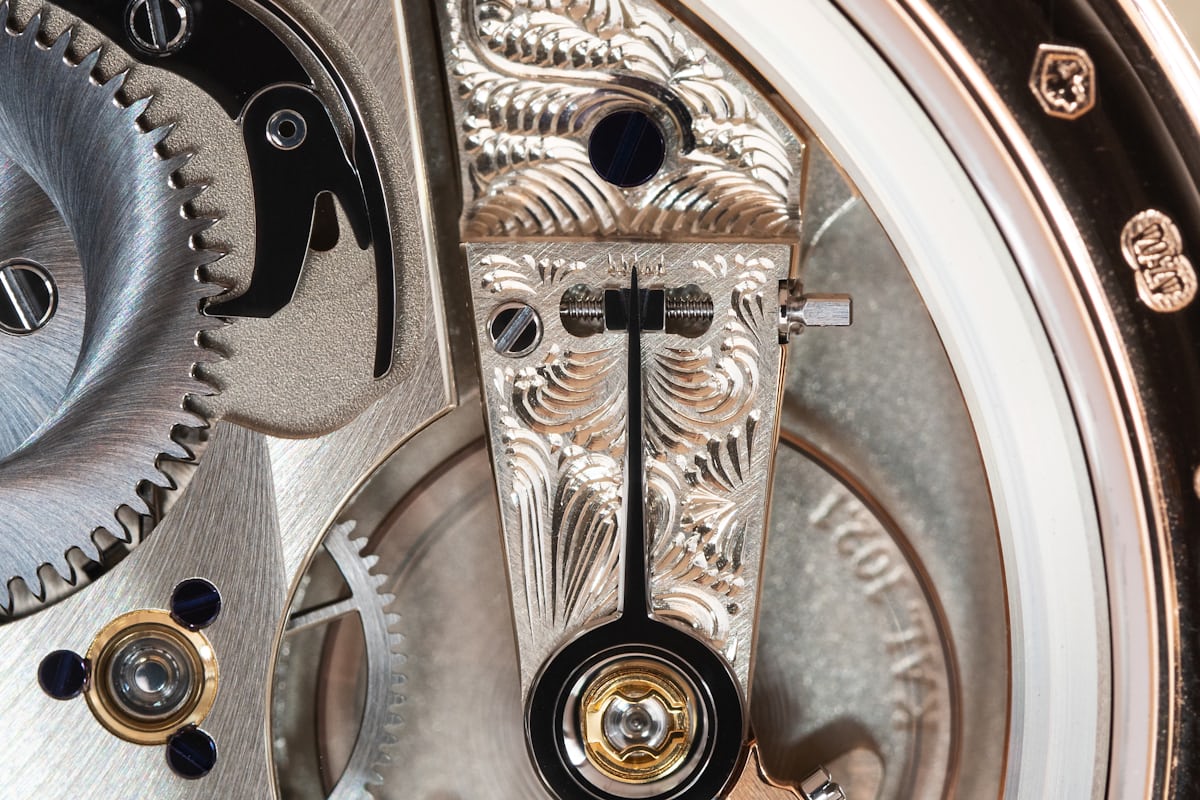Hands-On The Moritz Grossmann Benu
Read Time:6 Minute, 41 Second
#MTNshortz3SixtyWorld
#mtnshortz3sixtyworldtv
#mtnshortz3sixtyworld
The start of Baselworld is as full of sound and fury as it’s possible for anything to be in the fundamentally sedate world of watchmaking. However, one of the pleasant things about poking around in the relative quiet after the first day or two’s onslaught of Big News from Rolex, Omega, Tudor, Seiko, and the like, is making unexpected discoveries, and a good place to do that is among the small independent brands. Moritz Grossmann’s booth didn’t take up much real estate this year (it never does), but in the company’s almost closet-sized meeting room, you could see some of the most beautifully executed wristwatches anyone is making right now, and one of the nicest (in every sense of the word) that we saw was the Benu 37.
#mtnshortz3sixtyworldtv
#mtnshortz3sixtyworld
The start of Baselworld is as full of sound and fury as it’s possible for anything to be in the fundamentally sedate world of watchmaking. However, one of the pleasant things about poking around in the relative quiet after the first day or two’s onslaught of Big News from Rolex, Omega, Tudor, Seiko, and the like, is making unexpected discoveries, and a good place to do that is among the small independent brands. Moritz Grossmann’s booth didn’t take up much real estate this year (it never does), but in the company’s almost closet-sized meeting room, you could see some of the most beautifully executed wristwatches anyone is making right now, and one of the nicest (in every sense of the word) that we saw was the Benu 37.
The Benu 37 is the smallest watch in the Benu collection (which was the first Moritz Grossman collection at the time of the company’s launch, in 2008) and though it’s also the simplest, it’s just as rich in carefully thought out detail as any of the more complicated Grossmann watches. In classic Glashütte fashion, there is nothing extraneous – just an absorbingly high level of attention to everything essential. One of the most enthralling features of Moritz Grossmann watches are the hour and minute hands, which in the Benu 37 are heat-treated to a brownish-violet, rather than the usual cornflower blue (I’ve seen this color used in some vintage American pocket watches but it’s generally been far less common to heat-treat steel hands to this color, than to blue). The hands in the Benu 37 are extremely finely made, with highly polished steel centers; seeing them is a reminder of what the standard should be for high grade hands in fine watchmaking.
The movement is the caliber MG 100.0. This is a 26.0mm x 3.45mm, hand-wound movement, with an adjustable mass, 10mm balance; there is a micrometer screw-type regulator, which has been designed to be usable without de-casing the movement. This type of regulator is another feature I’ve seen a lot of in vintage American pocket watches (although I’m sure it’s not exclusive to US-made 19th and 20th century railroad-grade pocket watches, that’s the only place I’ve personally seen them). The three-quarter plate is untreated German silver, with an engraved, stepped balance cock held in place by a single, heat-purpled screw – the stepped cock and shape of the screw are reminiscent of late 19th century hand-made English pocket watches. And as well, it’s a pillar-and-plate construction, which is about as resolutely anachronistic as it gets – pillar-and-plate movement architecture pretty much went out with catgut fusées, and by the mid-19th century had largely vanished.
As you get in a bit closer to the movement, you realize that the elaborately executed hands are not an exception, but rather the rule, in terms of Moritz Grossmann’s approach to watchmaking. Everything on the movement side of the watch appears to have been done in as meticulous a fashion as possible. The micrometric fine adjustment is a quite complex solution, but so is the click mechanism (the spring and pawl system that keeps the ratchet wheel from slipping back, and prevents the watch from unwinding as you wind it). The balance spring stud holder, which holds the outer end of the balance spring in place, is quite complex as well; I can’t recall ever having seen anything quite like it, outside of Moritz Grossmann.
The screwed-in gold chatons for the (white sapphire) train jewels are another unecessary and luxurious flourish, as is the very eye-catching, double-spiral sunray brushing on the ratchet wheel, with its visible jeweled bearing. The crown wheel is beautifully finished as well, with a black polished steel cover that contrasts beautifully with the ratchet wheel. An additional point of interest is that all the train wheels are made, not of traditional brass with steel pinions, but ARCAP, which is a light, high tensile-strength, nonmagnetic alloy (copper, nickel and zinc) that first appeared in watchmaking in very high end watches (Richard Mille) but which is now also increasingly being used in mass produced watches (the Tissot Powermatic and Swatch Sistem 51 both have ARCAP parts).
Both the stepped balance cock, and the cock for the 18-tooth escape wheel, are hand-engraved.
Center, the crown wheel (so called because it turns when you turn the crown) and upper right, the ratchet wheel.
You might be starting to suspect that all this does not come cheap, and you would be right – the Benu 37 is an extremely expensive time-only wristwatch. The version you see here, in rose gold, lists for $28,300. That’s a breathtakingly high price, certainly. Now, probably neither brand will thank me for mentioning the other in the same breath, but you, gentle reader, are certainly thinking the same thing I am: the Lange Saxonia 37 comes with all the reputation associated with A. Lange & Söhne, and is in many respects a very similar offer – only the Saxonia 37 is $14,800, or in other words, just shy of half the price of the Grossmann. Price, however, is not the whole story; if you compare the two watches side by side you will see obvious differences in approach. For instance, a comparison of the finish and complexity of the ratchet wheel, crown wheel, and click/click springs of the two watches would tend to favor the Grossmann, certainly in complexity and variety of finishes, if not in quality.
Micrometer fine regulating mechanism.
Further complicating matters for those of you with five figures to burn on a high grade, hand wound watch, is Patek Philippe. There are some time-only Calatravas in Patek’s catalogue right now which have prices high enough to give even a Gilded Age robber baron an uneasy feeling of social injustice – a 6006G (which, okay, is not really a fair apples-to-apples comparison as it’s an automatic, and has a date pointer) is a whopping $30,620 of your best beloved dollars. However, the 5119J, with caliber 215 PS (less elaborate than the Grossmann caliber 100.00, more elaborate than the Lange L093.1) splits the difference, at $19,730. The funny thing is, there are distinct differences in approach between all three watches and, taking into account the state of modern, high-end watch pricing, the differences actually seem to make a weird kind of sense, at least on a complexity-of-construction and finish basis. If you’re wondering about Audemars Piguet, by the way, they do have a very lovely hand-wound movement: the in-house caliber 3090; however this is a smaller movement, at 21.4mm, and it is currently only deployed in either a 28mm or 33mm version. The 33mm watch (the Jules Audemars Small Seconds, 33mm) does however undercut the Patek significantly, at $17,400.
Questions of cost aside (and if you can afford, and desire, a simple, hand-wound, precious metal, high grade watch in the five figure price range at all, the question is probably not “how much?” but rather “which one?”) the Benu 37 is a very, very enjoyable piece of watchmaking. Every square nanometer of every visible element (and probably every invisible element, too) seems to have been pored over and brought to as fine a level of finish as possible, and on the wrist it’s one of the most charming wristwatches I’ve worn in a long time. There is a certain amount of competition in quality, in hand-wound watches, at this price point but high-grade hand-wound movements are actually fairly rare, so it’s not a terribly crowded field. Even in comparison with other models between $15,000 and $30,000, the Moritz Grossmann Benu 37 makes an excellent case for itself – and for the benefits of a certain appealingly obsessive attention to detail.
Source: Hodinkee
READ ALSO: Breaking: Police move Melaye to Lokoja
Source: Hodinkee
READ ALSO: Breaking: Police move Melaye to Lokoja

